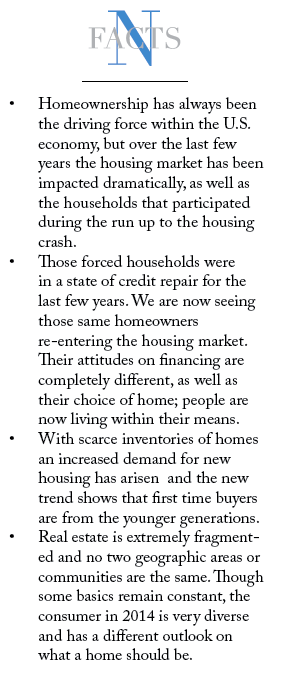

Constance Freedman took some time out of her extraordinarily busy schedule to talk to us about Second City Ventures and REach. REach is NAR’s program to hand-pick technology startup companies that can provide value to the Real Estate Industry, and help them grow and integrate with the industry.
The Second Century Ventures Fund (SCV) is a fund set up by the National Association of Realtors (NAR) six years ago, after their 100th anniversary (hence the name Second Century). Constance Freedman manages all aspects of the fund, from cultivating investment opportunities to helping portfolio companies achieve their strategic goals. Constance is also Managing Director of REach™, Second Century Ventures’ technology accelerator program.
It is a known fact that Real Estate represents 15% of the U.S. economy, over $7 billion of ad spend and 2.5 million jobs. If you were a technology company that developed a hot product, how do you break into the Real Estate market? You apply for REach, and if selected, NAR partners with you to make your name synonymous with Real Estate. It’s literally a dream come true for tech startups that can benefit the industry.
“NAR is the nation’s largest trade organization, and they literally hold your hand and give you access to their 1 million plus members. It’s more than just acceleration,” says Constance.
To clarify and give some background, we are really talking about two different entities here, Second Century Ventures, and REach. SCV is the investment arm of NAR, providing capital and resources to companies that can benefit the Real Estate Industry. Some past SCV investments include such familiar brands as ePropertyData, ZipLogix, Sentrilock, ifbyphone, Move Inc., and DocuSign. SCV actually funds the tech startups, whereas REach mentors and fine tunes the tech startups, then introduces them to the Real Estate Industry as preferred partners, accelerating their growth without providing actual startup capitol.
Most companies that are considered for either SCV or REach have a product or service that can serve a number of different industries, including Real Estate. For example, DocuSign provides enormous value to any industry with tight deadlines and that requires authenticated signatures, but the revolutionary value and convenience if offered the Real Estate Industry was enough to make SCV give them financial backing and literally roll out the red carpet to present DocuSign to the Real Estate Industry.
 “Some companies don’t meet SCV’s investment threshold, but still have great potential, so we created REach to help them accelerate into the Real Estate Industry with mentoring, exposure, access to investment opportunities, and guidance on how to target this crazy industry,” says Constance.
“Some companies don’t meet SCV’s investment threshold, but still have great potential, so we created REach to help them accelerate into the Real Estate Industry with mentoring, exposure, access to investment opportunities, and guidance on how to target this crazy industry,” says Constance.
REach helps companies tailor their product or service specifically to the Real Estate Industry. REach mentors (some of the most highly regarded executives and entrepreneurs in the industry from companies with combined revenues of several billion dollars in real estate alone) guide them in optimizing both their marketing efforts and product offering to be real estate specific. REach also provides focus groups comprised of real estate professionals, to give real feedback on the product before it hits the market.
But by far, the greatest benefit of REach is being associated with, and introduced by, the National Association of Realtors. Having NAR introduce you as a preferred product and technology partner carries some serious weight; real estate professionals will not bother to stop and compare your product to your competitors’ after NAR has given their seal of approval.
For real estate professionals, both SCV and REach help them sort through the thousands of technology options, and immediately know which ones to choose, as they’ve been researched, tried and tested by NAR. The result is a true win-win situation for NAR, their chosen technology partners, and the Real Estate professionals who will come to rely on them.

 Login
Login


















 The bulk sale-to-rental model provides a long-term rental income stream as well as the opportunity for appreciation. Consider the fact that these bulk sales are contributing to an inventory shortage on the open market, which means the model itself is ensuring faster appreciation as home prices increase due to limited supply. Many argue that this win-win for investors is a no-win for prospective homeowners, especially those who are rapidly getting priced out of the market. And those who get priced out of the market most likely end up renting, further feeding into the bulk sale investor’s win-win scenario.
The bulk sale-to-rental model provides a long-term rental income stream as well as the opportunity for appreciation. Consider the fact that these bulk sales are contributing to an inventory shortage on the open market, which means the model itself is ensuring faster appreciation as home prices increase due to limited supply. Many argue that this win-win for investors is a no-win for prospective homeowners, especially those who are rapidly getting priced out of the market. And those who get priced out of the market most likely end up renting, further feeding into the bulk sale investor’s win-win scenario.




 The Inland Empire is comprised mainly of blue-collar workers, and a potential industrial spike will likely increase blue-collar jobs. In John Husing’s same presentation he highlighted that manufacturing could be a major growth source for the Inland Empire. This in turn will attract more workers, and as a result increase the demand for housing. With the median wage for manufacturing sectors between $40,000-$55,000, and using the industry standard that a mortgage payment should not represent more than 35 percent of monthly wages, the higher quartile of blue-collar workers qualify for a $225,000 dollar home, with a 3.5 percent down payment. What the above figure describes is a need for moderately priced housing.
The Inland Empire is comprised mainly of blue-collar workers, and a potential industrial spike will likely increase blue-collar jobs. In John Husing’s same presentation he highlighted that manufacturing could be a major growth source for the Inland Empire. This in turn will attract more workers, and as a result increase the demand for housing. With the median wage for manufacturing sectors between $40,000-$55,000, and using the industry standard that a mortgage payment should not represent more than 35 percent of monthly wages, the higher quartile of blue-collar workers qualify for a $225,000 dollar home, with a 3.5 percent down payment. What the above figure describes is a need for moderately priced housing. Scott Kueny
Scott Kueny
 Mel Watt, Director of the Federal Housing Finance Agency (FHFA), is facing mounting pressure regarding his decision to lift a temporary suspension on allocating funds to the national Housing Trust Fund (HTF) and Capital Magnet Fund (CMF). With the lifted suspension, 4.2 basis points of each dollar of the unpaid principal balance for new business purchases from Fannie Mae and Freddie Mac will be diverted towards the funds.
Mel Watt, Director of the Federal Housing Finance Agency (FHFA), is facing mounting pressure regarding his decision to lift a temporary suspension on allocating funds to the national Housing Trust Fund (HTF) and Capital Magnet Fund (CMF). With the lifted suspension, 4.2 basis points of each dollar of the unpaid principal balance for new business purchases from Fannie Mae and Freddie Mac will be diverted towards the funds.